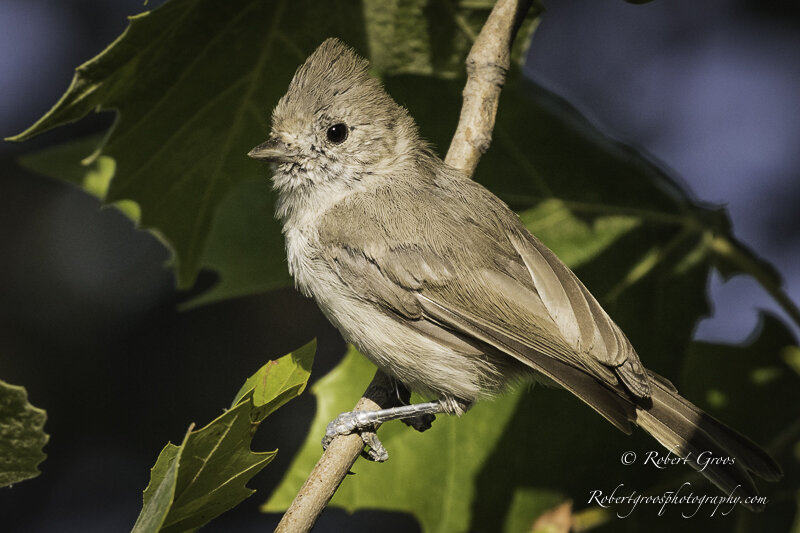The Oak Titmouse: looks can be deceiving
The gray-brown Oak Titmouse.
The tiny, gray-brown Oak Titmouse is as plain and drab as a bird can be. Were it not for its distinctive crest, one might easily dismiss this species as unremarkable.
Looks can be deceiving, though.
The Oak Titmouse is lion-hearted when defending its territory. If a squirrel, snake, or even a much larger bird approaches a nest, multiple titmice may mob the predator. Dive-bombing, even pecking, they will harass the interloper incessantly, all the while making a commotion heard throughout the trees, until the intruder departs.
Other birds may join the fray, such as the Anna’s Hummingbird and Ruby-crowned Kinglet I observed one morning as a couple of titmice vociferously protested the presence of a house wren in their tree.
Oak Titmice are quite common in the oak woodland foothills of the Sierra Nevada, south of Yosemite National Park. Nesting in tree cavities, their diet consists largely of insects. They will, however, happily empty your bird feeder of sunflower seeds, and cache them away for a rainy day.
Oak Titmouse nesting in tree cavity.
Oak Titmouse with insect.
Being unremarkable in size and color, titmice blend into their surroundings. You are most likely to hear them, if you see them at all. Interestingly, the male titmouse has a repertoire upwards of 12 calls or songs. This ability complicates identification when the bird can’t be seen.
Oak Titmouse
Occasionally, when I hear a vocalization I don’t recognize, I will forage excitedly though the brush looking for a “new” bird, only to discover a diminutive titmouse belting out another song.
OakTitmouse observing the photographer.
Keep your eyes and ears tuned. This little bird is worth a second look.
p.s. If you are not already on my mailing list and wish to be added for future posts, please send an email to: robertgroos1@gmail.com. Your information will not be shared, and you can unsubscribe at anytime. Thank you.










